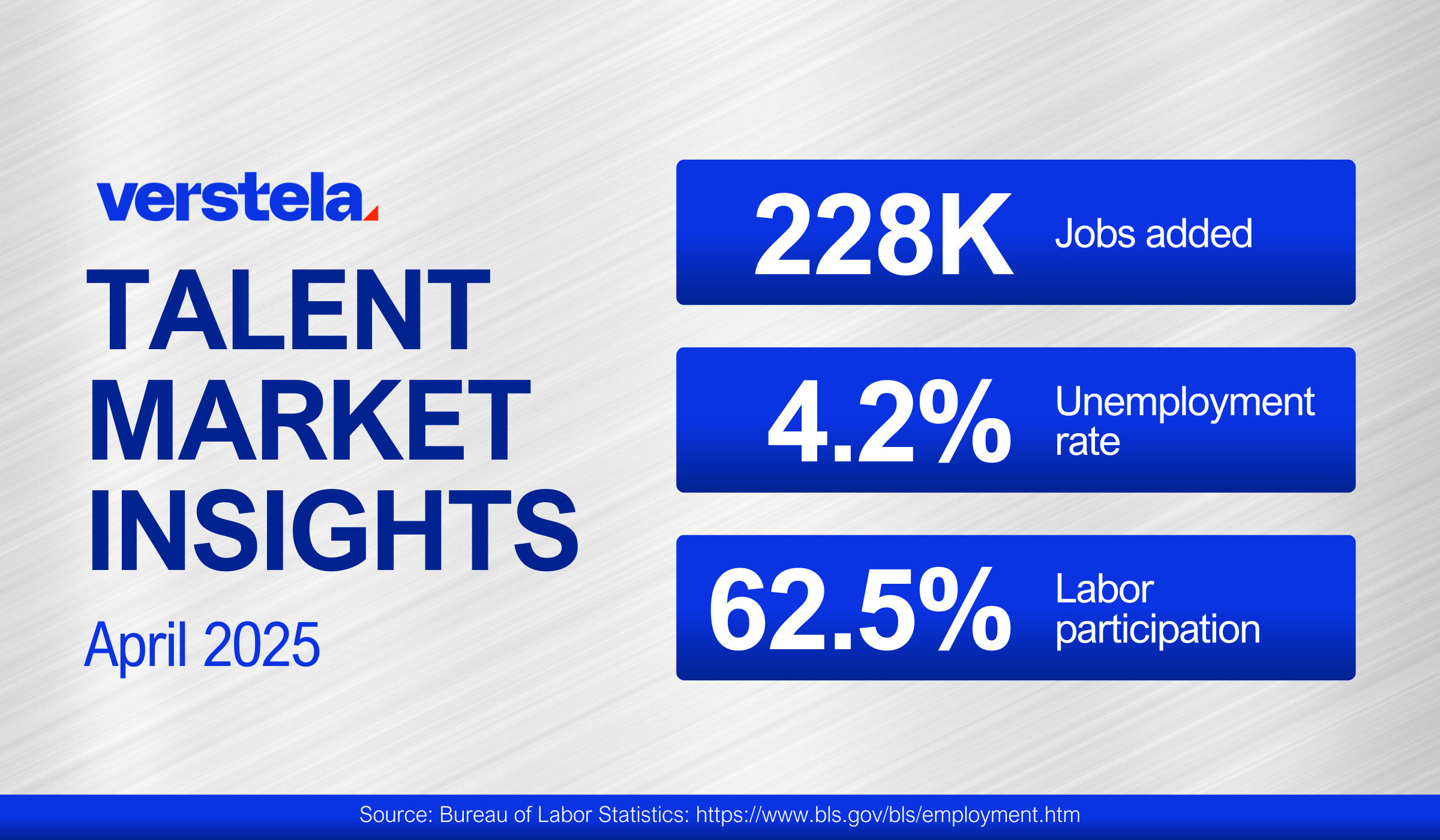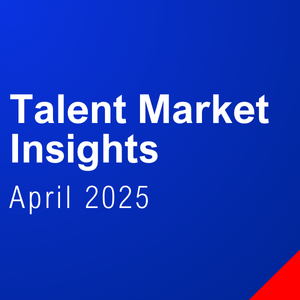
The latest jobs report provides a fresh snapshot of the labor market, showing continued strength in hiring — but also hinting at emerging shifts that employers should keep an eye on. As businesses manage through rising costs and growing uncertainty, staying informed about these trends can help guide workforce decisions.
Here are the key takeaways from the March report:
- 228,000 jobs were added in March
- The unemployment rate rose from 4.1% to 4.2%
- Workforce participation ticked up to 62.5%
- Wage growth increased 0.3% month-over-month
These figures reflect a labor market that remains solid, but not without signs of change. Below, we break down what this means for hiring, workforce planning, and how to adapt to shifting conditions.
Number of Jobs Available
March saw a higher-than-expected 228,000 jobs added—well above the 12-month average of 158,000. Key sectors driving growth included healthcare (+54,000), social assistance (+24,000), and transportation and warehousing (+23,000), nearly double the 12-month average of 12,000.
Retail trade also grew by 24,000, largely due to striking workers returning to jobs in food and beverage stores (+21,000). General merchandise stores, however, saw a decline of 5,000 jobs.
Meanwhile, federal government employment decreased by 4,000 jobs. It’s worth noting that employees on paid leave or receiving ongoing severance pay are not counted as jobs lost in the report.
Unemployment
The unemployment rate rose slightly in March, increasing from 4.1% to 4.2%, due in part to new entrants to the labor market. The rate has remained firmly between 4.0% and 4.2% since May 2024.
In the latest JOLTS report, which shows hires and separations for February, job openings held steady at 7.6 million, though that’s down 877,000 from a year ago. Hires and separations remained unchanged at 5.4 million and 5.3 million, respectively. Quits (3.2 million) and layoffs (1.8 million) also saw no significant movement.
Wage Growth and Workforce Participation
Workforce participation edged up from 62.4% to 62.5%, largely unchanged.
Wages grew by 0.3% month-over-month, consistent with the 12-month avg of 3.8%. While steady, this marks a continued slowing from the 4.1% annual rate reported in January.
Economic Variables to Keep an Eye On
Economic shifts are starting to affect hiring — and the next few months could bring more change.
Here are a few key trends to keep an eye on:
- Tariffs and trade policy: New tariffs are driving up business costs and creating uncertainty. This may lead some employers to slow hiring or look for more flexible staffing options to stay nimble.
- Labor force participation: More people are entering the job market, which could ease some hiring pressure — but if uncertainty grows, that trend could reverse quickly.
- Wage growth and inflation: Wages are still rising but at a slower pace. Combined with ongoing cost pressures, this could influence how employers think about pay, staffing mix, and budget planning.
Even in a strong labor market, it pays to stay ahead of shifts like these. Being ready to adjust gives employers an edge when conditions change.
Winning Moves for Employers
The labor market is still strong — but with new tariffs, rising costs, and large-scale federal cuts starting to ripple through the economy, employers are entering a more uncertain hiring climate.
Here are four smart moves to stay ahead:
- Keep a warm pipeline. You may not be hiring today, but that could change quickly. Stay connected to past applicants, referrals, and local talent so you’re not starting from scratch when demand picks back up.
- Hold on to the talent you have. Even if you’re not growing your team right now, focus on keeping your current employees engaged. Check in, recognize their contributions, and offer small growth opportunities where possible. How you support your team during uncertainty can have a lasting impact.
- Rethink what the “right fit” looks like. Skills matter more than resumes right now. Be open to candidates with transferable experience — or employees who are ready to grow into new roles. Flexibility in hiring criteria can help you find strong performers faster.
- Use staffing to stay flexible. Staffing gives you the ability to scale your workforce up or down as business needs shift. It’s a low-risk way to stay productive without overcommitting to long-term hires during unpredictable times.
Need Support Navigating What’s Ahead?
Whether you’re adjusting your workforce strategy, filling urgent roles, or planning ahead for what’s next, Verstela is here to help. Our team stays on top of labor market trends and local hiring conditions so you can make informed decisions — and find the right people, right when you need them.
Looking for more insights? Visit our Employer Resource Center for practical tools, hiring tips, and market updates.


